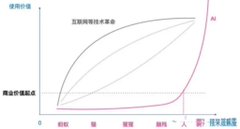Sequoia Capital US partner Konstantine Buhler recently delivered a speech titled "The $10 Trillion AI Revolution," which is well worth a watch. Key points: 1. Industry Stage Assessment The Industrial Revolution took 211 years to refine the "steam engine → factory → assembly line" model; The AI revolution has only progressed to "GPU steam engine → deep learning factory." The next phase will be "dedicated assembly lines"—specific AI systems for vertical scenarios will replace today's general-purpose large models and become the birthplace of new monopolies. 2. Market Size Reassessment The AI service market is not $20 billion, but $10 trillion (Sequoia Capital simply adds "number of displaced occupations x annual salary"). SaaS in the cloud era has boosted the $350 billion software market to $650 billion; the AI era will recalculate all current "human services," pushing their boundaries outward. 3. Five major trends determine the strategy. 1) Productivity leverage: Hundredfold efficiency trades for decreased controllability → Products must make "human-machine verification" the default workflow. 2) Evaluation criteria move beyond the lab: Real business metrics > academic benchmarks, starting with a scenario-based "competition." 3) Practical reinforcement learning: RL is no longer just a paper, but a core formula. Whoever first develops "RL + vertical data" will win. 4) AI enters the physical world: With the software dividend exhausted, hardware manufacturing, quality inspection, logistics, and robotics are the next 10x growth areas. 5) New computing power production function: FLOPs/person increases by 10-10,000 times. Inference efficiency and security represent a hidden trillion-dollar market. 4. Sequoia's Five Current Areas of Investment 1) Persistent Memory (Long-Term Memory + Identity Consistency) 2) Seamless Communication Protocol (the "TCP/IP" of AI-to-AI) 3) AI Voice (Faster than video, most lucrative in B2B scheduling/transaction scenarios) 4) AI Security (Three-layer protection: R&D, distribution, and endpoints, enabling standardized "security agent" products) 5) Open Source Competitiveness (Preventing ecosystem lock-in by giants, continuously investing in open source models and toolchains) 5. One-Sentence Action List for Entrepreneurs Step 1: Choose a vertical human resources track with "annual salary x headcount > $50 billion"; Step 2: Use RL + proprietary data to train a "small model" and first achieve world-leading performance on a real-world KPI; Step 3: Integrate "persistent memory + multi-agent collaboration" into the product, allowing users to directly hire an AI team; Step 4: Convert the 50% cost savings into a new pay-per-result business model; Step 5: In 2018 Feed business data back into the model within a month, creating a data flywheel and achieving a 10x efficiency difference over competitors—that's your "dedicated assembly line." 15 Keywords Specialization, 10 trillion replacement costs, RL engineering, AI physicalization, FLOPs production function, persistent memory, AI voice portal, secure agent, open source moat, real KPI competition, data flywheel, small vertical models, human-machine verification workflow, pay-per-results, efficiency difference x10. Speech link: youtube.com/watch?v=yoycgOMq1t...…
This article is machine translated
Show original

qinbafrank
@qinbafrank
05-04
O3的智商接近140了,估计再过段时间就能看到智商接近150的AI模型了,意义过于重大。一年多前聊过:AI替代的对象是人,或者现有软件,而这些的成本和效率之间的平衡,已经被当今世界优化到了极致。因此AI的价值拐点,本质上是AI越过社会智力成本的拐点,一旦越过,AI价值的确是非线性上升。所以AI不到60 x.com/qinbafrank/sta…



From Twitter
Disclaimer: The content above is only the author's opinion which does not represent any position of Followin, and is not intended as, and shall not be understood or construed as, investment advice from Followin.
Like
Add to Favorites
Comments
Share






